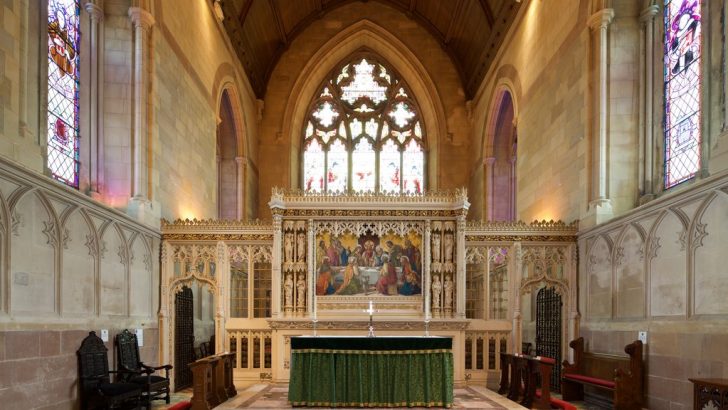Unlocking the Church: The lost secrets of Victorian space
by William Whyte (Oxford University Press, £18.99)
In the past Christianity poured a great deal of art, energy and money into buildings. So much so that the cathedrals of the middle ages have come in a special way to symbolise for many the very nature of the Church: their aspiring pinnacles promoting inspiration.
Today, however, all traditions are finding themselves having to preserve and care for buildings that strike many of us as useless to society. With talk of the community being important, not the edifice, much that earlier generations understood, or seemed to sense, is lost on modern visitors in search merely of “heritage”.
Author William Whyte, vice- president of St John’s Oxford, is Professor of Social and Architectural History in the university, as well as an associate priest in the Anglican parish of Wolvercote.
The focus of this fascinating book is on what the author sees as “the story of a revolution”. The outcome was a range of buildings informed by the ideas of John Henry Newman, John Ruskin and Augustus Pugin, “and their ideas about the role of architecture in our spiritual life and well being”.
Restoration
This roll-call of names demonstrates that at the heart of what they sought was a restoration of medieval Catholic idea of how a church as a building should be arranged, decorated, and used. These aspects of the building affected what was done in the church, and what was done outside the church in the general social life around it.
The book opens with an evocation of the little Anglican chapel created by Newman at Littlemore (which he loved deeply) and from which, at the great break in his life that made him whole, he left to enter the Catholic Church. There he achieved his full flowering, but never forgot that he had roots in the Anglican Tractarian movement.
This return of the Catholic through Tractarianism spilled over, as Whyte makes clear, into not only the Non-Conformist churches, but also into the Catholic Church itself, and its building ideas in the 19th Century, in Ireland as well as Britain.
In a series of five chapters he explores Victorian architecture in a genuinely inspiring way, discussing how the visitor should see, feel, visit, analyse and revisit the churches. Getting the most out of a church visiting demands not just some vague aesthetic pleasure, but a real appreciation of why things are the way they are in these buildings. Their purpose is not primarily to delight our senses, but to worship God.
Many visitors today can delight in the buildings, but not understand them. We speak loosely of heritage, but this surely ought to mean something, an expression of a feeling, a sense of truth, in which the visitor can share.
Throughout the book, as he explores with devoted expertise, the nature of the buildings that he loves, Whyte emphasises the need for all of us to use our eyes, that seeing is necessary to knowing, and so he implies knowing may evolve into believing.
The focus on this book is on England. But he remarks in his preface that people living elsewhere in Scotland, Ireland, Australia and New Zealand, and part of North America too, will find themselves living near a Victorian Church.
This book will prove of interest and value to people living here in Ireland. That spill over between the different traditions can be seen here too: when the Catholic Church in Ireland commenced its great building campaign in this period it left behind the neo-classical of, say St Andrew’s, Westland Row, for the pinnacled dominance of Armagh cathedral.
Here in Ireland we can see for ourselves in University Church in Dublin, or in Pugin’s handful of buildings in the city and country, solid examples of what Prof. Whyte is discussing.
He mentions in passing how processions made a come-back. At one great event Anglican, Catholic and Non-Conformists all took part, all ending up in a picnic in the castle of Lord Bute, who three years later became a Catholic. The 19th Century in many ways was not quite what we often think it was.
This is a splendid book, thoughtful, insightful, informative and suffused with a sense of religion which is unusual in architectural historians.


 Peter Costello
Peter Costello St Patrick's Cathedral, Armagh
St Patrick's Cathedral, Armagh 